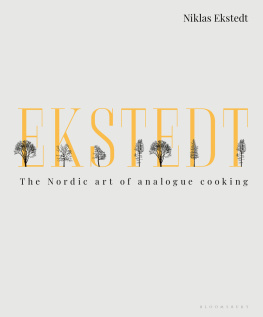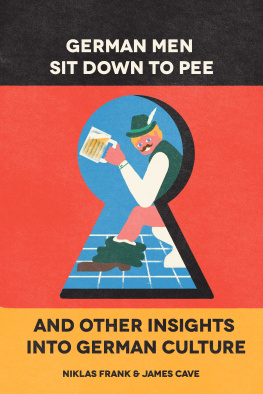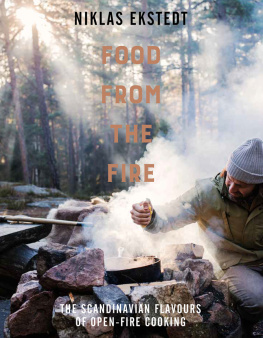Niklas Ekstedt - Ekstedt
Here you can read online Niklas Ekstedt - Ekstedt full text of the book (entire story) in english for free. Download pdf and epub, get meaning, cover and reviews about this ebook. year: 2020, publisher: Bloomsbury UK (Trade), genre: Home and family. Description of the work, (preface) as well as reviews are available. Best literature library LitArk.com created for fans of good reading and offers a wide selection of genres:
Romance novel
Science fiction
Adventure
Detective
Science
History
Home and family
Prose
Art
Politics
Computer
Non-fiction
Religion
Business
Children
Humor
Choose a favorite category and find really read worthwhile books. Enjoy immersion in the world of imagination, feel the emotions of the characters or learn something new for yourself, make an fascinating discovery.
- Book:Ekstedt
- Author:
- Publisher:Bloomsbury UK (Trade)
- Genre:
- Year:2020
- Rating:3 / 5
- Favourites:Add to favourites
- Your mark:
- 60
- 1
- 2
- 3
- 4
- 5
Ekstedt: summary, description and annotation
We offer to read an annotation, description, summary or preface (depends on what the author of the book "Ekstedt" wrote himself). If you haven't found the necessary information about the book — write in the comments, we will try to find it.
Ekstedt — read online for free the complete book (whole text) full work
Below is the text of the book, divided by pages. System saving the place of the last page read, allows you to conveniently read the book "Ekstedt" online for free, without having to search again every time where you left off. Put a bookmark, and you can go to the page where you finished reading at any time.
Font size:
Interval:
Bookmark:


I dedicate this book to all the staff that are working, and have worked, at Ekstedt. The success of the restaurant is all thanks to you.
You are the best!
Contents


Introduction

From Niklas

Fire the heart & soul of Nordic cuisine
The year before Ekstedt opened was a bewildering and overwhelming time for me. Our eldest son had just been born the greatest thing that ever happened to me, until I became a father of two wonderful boys and I was, of course, on cloud nine. But at the same time, I had experienced a rough year professionally. Although highly acclaimed and popular, I had decided to close down my fine-dining restaurant in Helsingborg (a small coastal city in Skne, the southern-most province in Sweden), and the opening of a new restaurant in Stockholm hadnt gone according to plan. Meanwhile, things seemed to be going incredibly well for all my friends and colleagues. Chefs and sous-chefs previously working for me had come to open their own restaurants and were now highly praised for their take on the New Nordic Food Manifesto, with restaurants such as NoMa and Fviken, and chefs like Daniel Berlin, leading the way. The feeling of being an up-and-coming artist peeping behind the curtain ready to get on stage to perform my magic, turned into an unbearable disorientation and loneliness. I had been part of something new and ambitious, but while my fellow chefs went on to dominate world gastronomy, I became a mere observer. I remember finding myself at a crossroads not knowing which direction to take; was pursuing my dream really worth all the hard work and long hours away from my family? Perhaps it was time for me to leave the restaurant life for good and do something completely different.
My wife and I had recently bought a summer cottage on Ingar, in the beautiful Stockholm archipelago, where we had created a really nice kitchen. However, since we hadnt had a chance to fix all the plumbing and rewire the old electricity, the kitchen lacked running water, and I preferred to cook out on the patio. I began to experiment with outdoor cooking and soon made a simple firepit out of an old Weber charcoal barbecue lid turned upside down, putting a cast-iron pan in the flames. The stronger my curiosity for open-fire cooking grew, the more soiled and sootier our patio became. But I loved it.
Nonetheless, my endeavour made me wonder why Nordic kitchens hadnt stayed true to their roots and why we had abandoned our conventional cooking techniques in favour of more contemporary ways of cooking. Whilst many other cuisines around the world the Italian and their famous Neapolitan wood-fired pizza, for example remain faithful to their traditional cooking techniques, and instead refine and learn how to master the raw materials to attain a neo-gastronomic sophistication, Sweden, as well as the other Nordic countries, had chosen a different path. Among Swedes, our traditional cooking techniques are long forgotten, and all that remains are scanty relics displayed in open-air museums. When electricity was introduced in Swedish homes a century ago, we quickly became accustomed to the new way of cooking. But when discarding grandmas old stove and wood burner, we didnt only throw away the trusty cast-iron pans and waffle irons to make room for induction cookers, convection ovens and halogen light bulbs; more importantly we threw out old family recipes, as well as the knowledge of the original and unique way to cook many of the dishes. This choice fascinated me, as I lit the logs in my summer cottage fire pit and contemplated my future.
A few weeks later I went back to Stockholm and the grand National Library of Sweden, where I read every book I could find about ancient Swedish cooking techniques and methods. Fairly soon, I realised that everything associated with traditional Nordic cuisine was invented before electricity became an essential part of our everyday life, and our gastronomic heritage still revolved around a wood stove or a large fireplace. Traditionally, a large cauldron over an open fire was the heart of every home and kitchen. For the rich as well as for the poor, the fire and the wood itself was of the greatest importance to the family, since it wasnt only used for cooking but also for heating (hence our love for snuggling up in front of the fireplace today perhaps more commonly known due to the Danish word hygge). If you ran out of wood, or for other reasons couldnt keep the fire burning, your house immediately turned cold and damp, especially during the long, dark winter months. To spend the autumn stacking wood to make sure you had a pile of logs to last the winter became a matter of life and death. And consequently, cooking was determined by how much wood you had piled up. When reading this, the pieces of my gastronomic jigsaw puzzle fell into place, and for the first time I fully realised the magnitude of the role which birch wood played in the Nordic culture. At the same time, I was saddened by the thought that the fire once keeping us alive had been degraded to something that today was only used to create a cosy ambience in Swedish sitting rooms.
This made me want to experiment a bit more and I decided to cook exclusively with birch wood, if only just to try and see where it would take me as a chef. When returning to Ingar I built a proper fireplace and a larger fire pit, bought tons of cast-iron pans, waffle irons and griddles in various sizes and set out on my mission. Meanwhile, a restaurant venue in central Stockholm came on the market, and one of my friends, Vimal Kovac who ran one of the more prominent restaurant groups in Stockholm was quick to get his hands on it. The premises were small, but the location was to die for. When Vimal, not knowing the extent of my current passion, told me the restaurant had housed a wood-fired pizzeria, a flickering flame rose in my chest. Standing with sooty hands and heart pounding so loudly I could barely hear myself think, overlooking this enormous pile of birch wood in my backyard, I knew this wasnt just an opportunity; it was a message. I should open a restaurant using nothing but traditional open-fire cooking techniques.
Andreaz Norn, another friend of mine, had been at a catering school in re in Sweden, where hed met a chef named Gustav Otterberg. Gustav was as passionate as me about open-fire cooking and spent most of his time in the forest with friends and family and had moreover single-handedly built a terrific fireplace at home. A few days later we met in downtown Stockholm and did what I think many people before us have done when struck by an idea too unique to ignore; we used the restaurant napkin to clarify our vision. We sketched and talked, and for many hours discussed the heart and soul of Swedish gastronomy and what the two of us could do to turn old techniques into something contemporary, as well as how to convert thought into action and how to make it work in a restaurant atmosphere. Gustavs ideas were brilliant and many of the things we designed on the napkin that afternoon are methods we still use in Ekstedt today.
Font size:
Interval:
Bookmark:
Similar books «Ekstedt»
Look at similar books to Ekstedt. We have selected literature similar in name and meaning in the hope of providing readers with more options to find new, interesting, not yet read works.
Discussion, reviews of the book Ekstedt and just readers' own opinions. Leave your comments, write what you think about the work, its meaning or the main characters. Specify what exactly you liked and what you didn't like, and why you think so.










